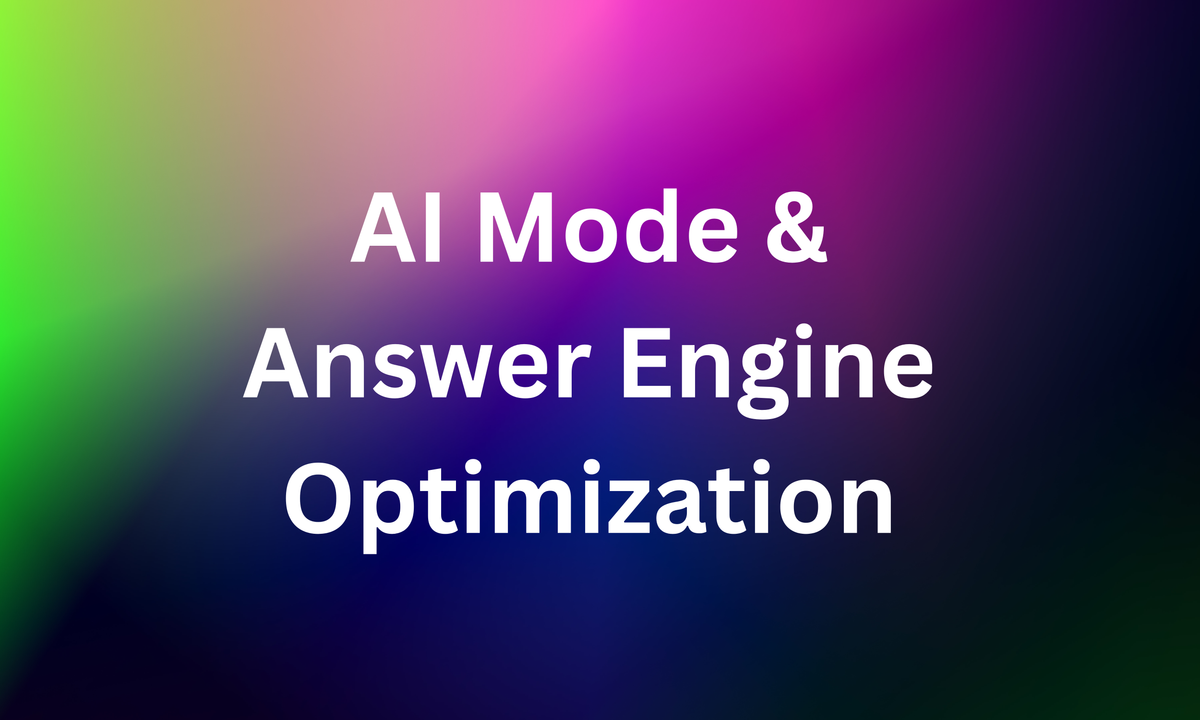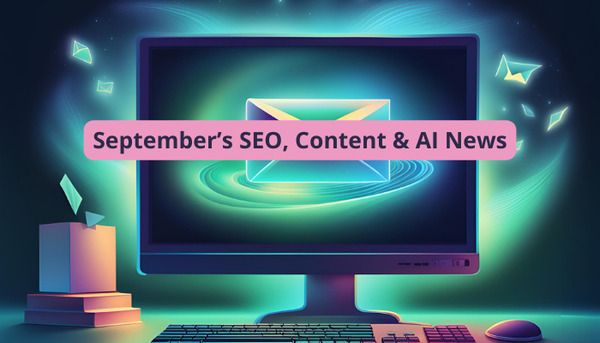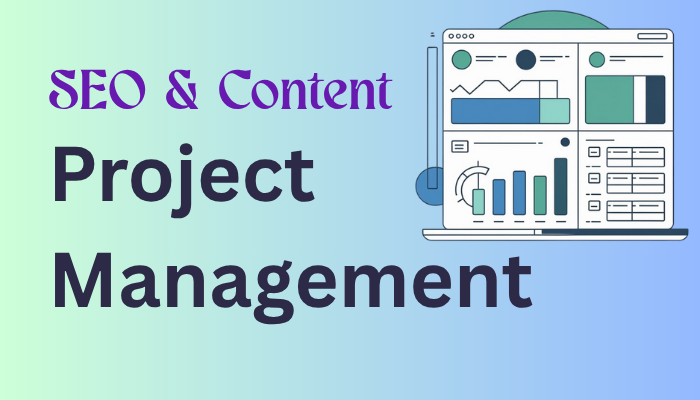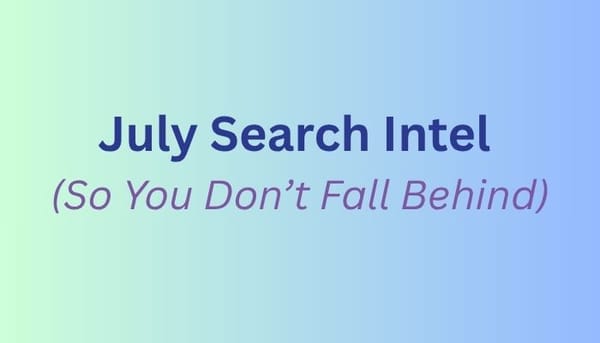Answer Engine Optimization: The New SEO Frontier

... and how the introduction of Google's AI Mode signals the death of traditional SEO. For good
Navigating the New Frontier: AI Mode Answer Engine Optimization (AEO)
Things are moving rapidly. With Google's AI Mode, powered by Gemini 2.5, search is no longer just about keywords and rankings. It's about providing direct, personalized answers. This means a fundamental evolution from traditional SEO to a new paradigm: **Answer Engine Optimization (AEO)**.
SEO vs. AEO: A Paradigm Shift
Traditional SEO
- Focus: Keywords and search rankings.
- Goal: Drive traffic to your website.
- Content Strategy: Optimize for search engine algorithms.
- Measurement: Organic traffic, SERP positions.
- Output: List of links to websites.
Answer Engine Optimization (AEO)
- Focus: "Answer-ability" and being a trusted source.
- Goal: Be the direct answer provided by AI.
- Content Strategy: Structure for AI summarization & personalization.
- Measurement: Inclusion in AI responses, brand authority.
- Output: Direct, AI-generated answers, often citing sources.
Key Principles of AEO
Be the Definitive Source
Craft content so authoritative and unique that AI chooses it as the primary reference for its answers.
Prioritize Originality & Clarity
Develop truly unique insights and present them with crystal-clear language, making them easy for AI to digest.
Make Expertise Explicit
Clearly demonstrate your authority and knowledge on the subject matter, building trust with both users and AI.
Leverage Structured Data
Use schema markup and other structured formats to help AI understand and extract key information from your content.
Build "Answer-Ready" Pages
Design your pages to directly answer common questions, providing concise and comprehensive responses.
Embrace Personalization
Understand that AI responses are tailored; focus on building brand loyalty for repeat engagement.
By adapting your content strategy to these AEO principles, you can position your website to thrive in the era of AI-powered search.
.
Now on to the details...
First, if you haven't heard about it or seen it around *gestures wildy" everywhere... let's talk about AI Mode
AI Mode is Google’s new, (currently) opt-in experience that fundamentally changes how Search works. Instead of the traditional search page of blue-links (which c'mon, has already radically shifted with its giant AI Overviews above the fold) it rebuilds your query behind the scenes by breaking it into sub-questions, gathering insights from dozens of sources, and delivering a custom AI-generated response.
Mike King has done a thorough review of the patent here for more in-depth review. Or, you can read Google's patent directly.
The engine behind it is Gemini 2.5, and it’s designed to feel more like an interactive research assistant than a traditional search engine. Has this been Google's plan with AI Overviews all along? I think they will intentionally kill off traditional search...once they find a proper monetisation strategy
You activate it manually (for now) by clicking a tab or button, and it includes follow-up capabilities so you can keep digging deeper within the same thread.
How is this different from AI Overviews?
Here’s a quick comparison:
What does this mean for SEO (and our content?)
Traditional SEO focused on keywords, rankings, and structured on-page elements. But with AI Mode, being "ranked" may no longer guarantee you’ll be seen or cited.
What matters more now:
- Being chosen as a reliable source among many.
- Originality and clarity—content needs to go beyond surface-level info.
- Answer-ability - can your content be synthesized into a helpful response?
Example:
Say you're in the health space and publish an article on “best foods for gut health.” If it’s a rehash of what's already been said, it may be ignored. But if you’ve included unique research findings, patient insights, or clear explanations others haven’t touched, that might be what pushes it into the AI-generated answer.
The Rise of Answer Engine Optimization (AEO)
Answer Engine Optimization changes SEO goals about ranking in those top blue links and instead forces us to think about structuring our content (and our expertise) for machines that are summarizing, contextualizing, and personalizing information on the fly.
Key AEO principles:
- Write to be included, not just indexed.
- Surface your insights early and clearly: AI doesn’t want to dig.
- Make your expertise explicit: Google needs signals it can trust.
- Use structured data to help systems interpret your content semantically.
- Invest in long-term content quality—Google has said it wants to show links to “creators you may not have previously discovered.”
The Personalization Layer
One of the most significant changes coming with AI Mode is personal context. For opted-in users, their past behavior - emails, reservations and preferences - can shape the answer they see.
This means:
- Two people searching the same phrase may get entirely different results.
- Tracking rankings becomes less useful.
- Loyalty and repeat visits matter more than ever.
If your content is something someone wants to come back to, share, or recommend, you're more likely to surface when their personalized AI mode kicks in.
The Metrics Question
Right now, AI Mode doesn’t pass referral data in analytics. Google has said this is a bug and will change, but we don’t yet know how clearly we’ll be able to track visibility or traffic from these experiences.
This reinforces the need to:
- Focus on qualitative engagement: bookmarks, shares, email list growth.
- Watch for patterns in “dark traffic.”
- Consider indirect signals of performance like branded search volume and return visits.
What Comes Next
AI Mode is only live in the U.S. for now, but it’s expected to roll out more broadly. The technology is only going to get more sophisticated—especially as Google folds in Gemini Live, Project Mariner, and Deep Search.
Consider this your preview of the future, where:
- AI agents browse and summarize content on users’ behalf.
- Glasses (like Google’s upcoming Gemini-powered models from Warby Parker and Gentle Monster) make real-world objects searchable.
- Search becomes more about answers than results.
What SEO's need to do next:
Here is your immediate action plan. First, set the stage within your company. Make sure everyone is aware of the changes, and how this is going to impact key business metrics like traffic and rankings. A good SEO sets expectations in advance, and is prepared with a plan and next steps.
Members, subscribe to get a script to send out to stakeholders in your company explaining what is changing in the SEO landscape and your 30, 60, and 90 day action plan
For both members and non-members, are key next steps you can build into a custom action plan for your needs.
1. Reframe your SEO goals
- Stop asking “How do I rank #1?”
- Start asking “Would this be chosen as a source in an AI-generated answer?”
- Focus on being useful, quotable, and clear.
2. Audit your top content for originality
- Ask: What’s here that no one else is saying?
- Add firsthand insights, case studies, unique data, or strong POVs.
- Remove generic fluff—AI ignores it.
3. Surface your value early
- Assume AI doesn’t scroll.
- Make key insights, definitions, and takeaways clear within the first few lines or sections of your content.
- Use strong subheadings and direct answers.
4. Start writing for machines and humans
- Use clear, structured formats like:
- Q&A blocks
- How-to steps
- Comparison tables
- Add schema markup where relevant (FAQ, HowTo, Product, etc.)
5. Build "answer-ready" pages
- Create content that feels like the output of a good AI result: concise, helpful, well-organized, and easy to skim.
- Make pages internally linkable for broader context and multi-intent coverage.
6. Prepare for personalization
- Go into GA4 > Engagement > Pages and Screens > “Views per active user”
- Identify which pages users return to and improve/update those first
- Build email lists or communities that drive repeat visits—AI Mode values familiarity and trust
7. Track impact (even without clear data)
- Monitor “dark traffic” (direct visits that spike after publishing)
- Track branded search volume over time
- Collect qualitative signals: bookmarks, mentions, shares, DMs
8. Futureproof your format
- Add clear visuals and diagrams—especially for product or tutorial content
- Use internal prompts or side notes like:
“Ask Gemini to adapt this checklist to your industry” - Create content that can be remixed: summaries, downloads, snippets, video scripts
9. Stay ahead of the rollout
- Follow updates on AI Mode and Gemini Live tools
- Bookmark: https://blog.google/products/search
- If you're U.S.-based, enroll in Search Labs and start testing AI Mode queries now
10. Bonus for ecommerce and service providers
- Review your product feeds and imagery
- Optimize for visuals: clear images, lifestyle shots, alt text
- Prepare for a world where “shopping” happens via image and voice, not typed queries





